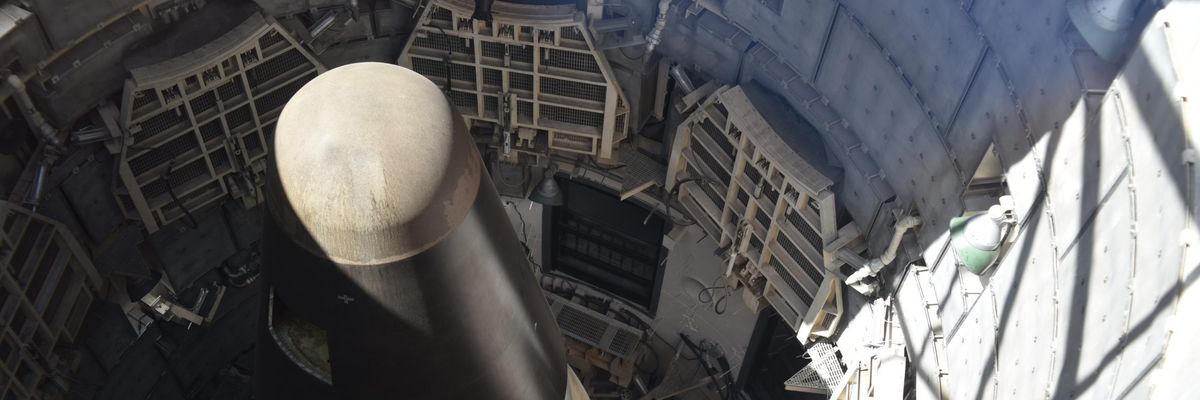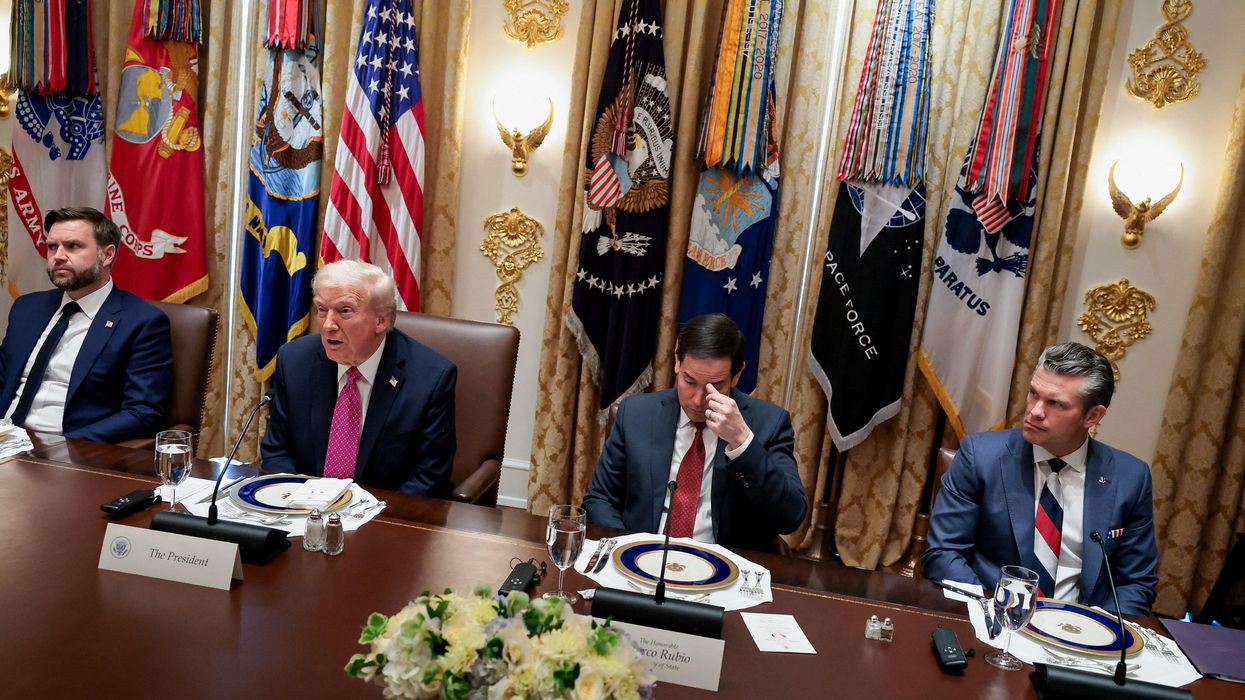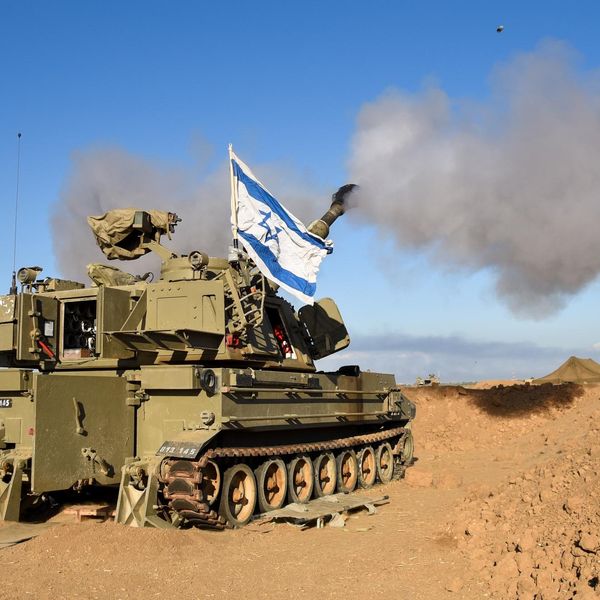There’s a myth in Washington that America’s nuclear posture is developed though sober consideration of complex strategic imperatives. There are risks, we are told, but we need thousands of nuclear weapons to keep America safe. They are our ultimate security. Wise men (it is almost always men) have objectively arrived at the minimum necessary deterrent based on decades of tested theory and practice.
None of this is true. As Randy Newman sang years ago, it’s money that matters. Contracts, not strategy, drive America’s nuclear force posture.
Strategy was never the sole determinant of America’s nuclear arsenal, but in the early decades of the Cold War, however flawed, it was arguably the major driver. No longer. It is now a thin veneer of justification for a collection of legacy systems and new programs promoted for financial and political profit. The entire process is guided by an army of lobbyists. “The defense sector employed 775 lobbyists and shelled out more than $126 million to influence Congress in 2018,” reports John Carl Baker from the Ploughshares Fund,
The path to a saner nuclear strategy, therefore, goes through the budget, not the other way around. Time spent debating alternative postures will be wasted if not joined by equal or greater efforts to shrink the budgets that fuel current and future weapons plans.
The evidence is everywhere. In the midst of a raging pandemic and economic collapse, Congress last month passed a $740.5 billion Pentagon budget that lavishes almost $70 billion on nuclear weapons and related programs, with little debate and few changes to Donald Trump’s request.
The Strategic Forces Subcommittee of the House Armed Services Committee, for example, held just three hearings last year and only called government witnesses. It then approved Trump’s budget in full. Major challenges to Trump’s policies and budgets were like pebbles thrown at a closed window: noticed but ignored.
It was similar in the Senate. The testimony of the head of the Strategic Command before the Senate Armed Services Committee provides an example of the vapid justification offered for the dozens of different weapon types and scores of options for thermonuclear war that Congress approved.
“Our deterrent underwrites every U.S. military operation around the world and is the foundation and backstop of our national defense,” Gen. Charles Richmond said, arguing that the United States needs to maintain “a credible [nuclear] deterrent” that “requires us to modernize and recapitalize our strategic forces to ensure our Nation has the capability to deter any actor, at any level.”
That was pretty much it for strategy. Thin gruel, but enough to get his budget approved — and keep a river of money flowing through Washington. The modest $88 billion “modernization” program that President Barack Obama authorized in 2010, as a bridge to the major nuclear reductions he wanted, has metastasized into a $2 trillion plan to replace every Cold War submarine, bomber, missile, and warhead with an entirely new generation of the deadliest weapons ever invented. Obama’s cuts died, but the contracts continued.
This plan will keep thousands of weapons deployed until near the end of this century — and, thus, lucrative deals for Lockheed Martin, Raytheon Technologies, Northrop Grumman, Boeing, and General Dynamics, the big five contractors that dominate military and nuclear policy.
They sell nuclear weapons like Kellogg’s sells cereal. It’s not a question of whether we need the product; they just need to convince us to buy it.
They do this in three ways. The first is a pitch that relies on product differentiation, a way to sell essentially the same goods in a variety of shapes, sizes, and packaging. You like shredded wheat? Then maybe you’d like it frosted, or bite-sized, or both. Thus, the familiar triad of bombers, land-based missiles, and submarines is now supplemented by cruise missiles launched from air and sea, a growing variety of ranges and yields, and a new campaign for nuclear hypersonic missiles and weapons in space.
The second is control of the market. These firms dominate in ways that Kellogg’s could only dream of doing. Corporations have thoroughly penetrated the military services generating the weapons requirements through decades of revolving doors and increasing dependence on contractors for core analysis, communication, and even administrative functions. The same is true of the civilian departments that purchase and oversee the weapons development and productions programs.
The Project On Government Oversight, for example, documented at least 380 high-ranking Department of Defense officials and military officers who went to work for weapons contractors. “The truth is,” says Senator Elizabeth Warren, “our existing laws are far too weak to effectively limit the undue influence of giant military contractors at the Department of Defense.”
The third is to do what Facebook and Amazon do so well: eliminate the competition. Contractors have basically absorbed or bought off institutional threats to their programs. In the late 1970s and early 1980s, when the American public and politicians engaged more fully in nuclear strategy, the contractors learned how to game the system. They backed groups and politicians who promoted bogus threats, like a “window of vulnerability” that would allow the Soviet Union to win a nuclear war with a devastating first strike. But the real genius was to place sub-contracts for their biggest, most controversial systems like the MX missile or the B-1 bomber in most or even all of the 435 congressional districts.
The jobs and revenues of these contracts and bases quickly dominated the decision-making processes in these states, They were supplemented by generous campaign contributions that — were they given to a judge and not a congressperson — would be grounds for recusal. Coupled with the fear establishment Democrats have for appearing “weak” on national security, this system of contracts, contributions, and campaigns has effectively gutted meaningful congressional oversight.
Contractors over the past few decades have also constrained the formerly independent analytical establishment. Just as the fossil fuel industry muted criticism of climate change and established alternative experts, when the Cold War ended and bipartisan movements to eliminate nuclear weapons arose, weapons firms flooded think tanks and universities with grants, compromising their independence.
Over just the past five years, at least $1 billion in U.S. government and defense contractor funding went to the top fifty think tanks in America. The key funders from the government, according to a report from the Center for International Policy, “were the Office of the Secretary of Defense, the Air Force, the Army, the Department of Homeland Security, and the State Department.” The defense contractors contributing the most were Northrop Grumman, Raytheon, Boeing, Lockheed Martin and Airbus.
It worked. Once sources for alternative military budgets and exposés, it is rare to find a major think tank report today that is critical of military spending or, even more rare, a specific weapons program. Institutes that benefit from this largess now churn out reports and events favorable to increased military budgets and “great power competition.” This last argument works perfectly for most centrist politicians and analysts. It has just the right amount of fear and nationalism to provide sound bites on television or the campaign trail.
This lavish funding has created a new generation of advocates for super-sizing the arsenal. While there are some brilliant analysts at the large institutes who are truly independent and do not take contractor funding, it is hard to name a significant nuclear weapons proponent who has not benefited directly or indirectly from corporate or government funding. Experts are not asked to disclose these personal or institutional conflicts of interest in their articles or quotes.
This should not be a cause for despair, but for recalibration.
It could start with a simple step every journalist could take: Disclose conflicts of interest in your sources. If an expert won’t disclose their funding, don’t quote them. In Washington, this is practically a death sentence.
It could come from the research institutes themselves: Reaffirm your independence. Decline donations from weapons firms and military departments. If that is too hard, disclose all such grants up front in your reports. We need the intellectual rigor of alternative analysis, but it must be truly independent — and complete the analysis by including the material factors shaping the current posture, not just the stated strategic justifications.
President Joe Biden could assert his power by cutting the nuclear budget and not rubber-stamping Trump’s weapons. “By acting swiftly to cancel or suspend these programs, and to cut the overall Pentagon budget accordingly, Biden will create considerable leverage for negotiations with Congress,” I wrote recently for The American Prospect. “He will arrive at a much better deal by starting at zero and negotiating up rather than by trimming the programs and negotiating down.”
Finally, the independent non-government groups that represent the last, truly independent organizations promoting a saner nuclear policy must recognize a simple fact of life: No alternative nuclear posture or clever op-ed will impact policy, no matter how brilliant. The only strategy that can succeed is to focus on the money. That means teaming up with those fighting to redefine what makes and keeps us safe, who advocate for increased funding to combat climate change, to battle the pandemic, to improve health care, and to address social inequities. They need the funds that are currently locked up in obsolete and dangerous weapons programs.
By linking up, by making cuts to the Pentagon budget part of the strategy of these groups (and by reimaging national security to include these issues), it may be possible to forge a broad united front that is more powerful than the contractors. It can identify alternative revenue streams for states and districts, shame Congress into restoring investigations and oversight, press journalists to disclose conflicts of interest of the experts they quote, convince experts that their work is not complete if it does not factor money into their analysis, and pressure the government to spend taxpayer money on programs that improve our lives, not threaten them.
And if this is too long a list to remember, just hum a little Randy Newman.
















